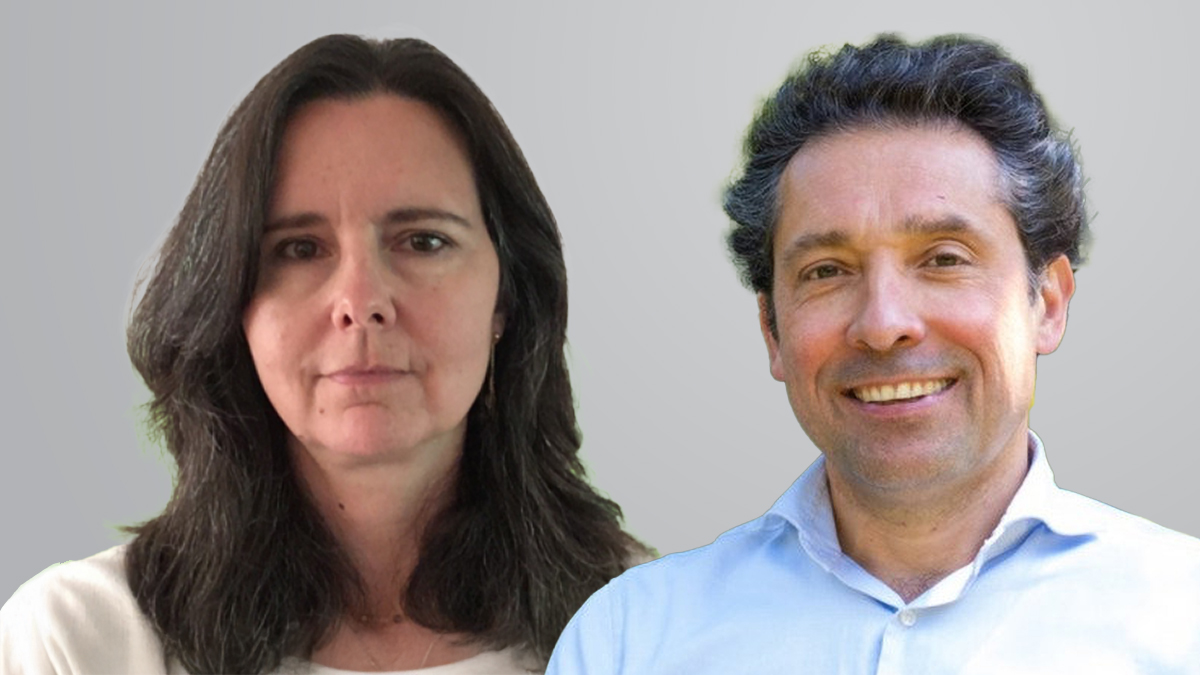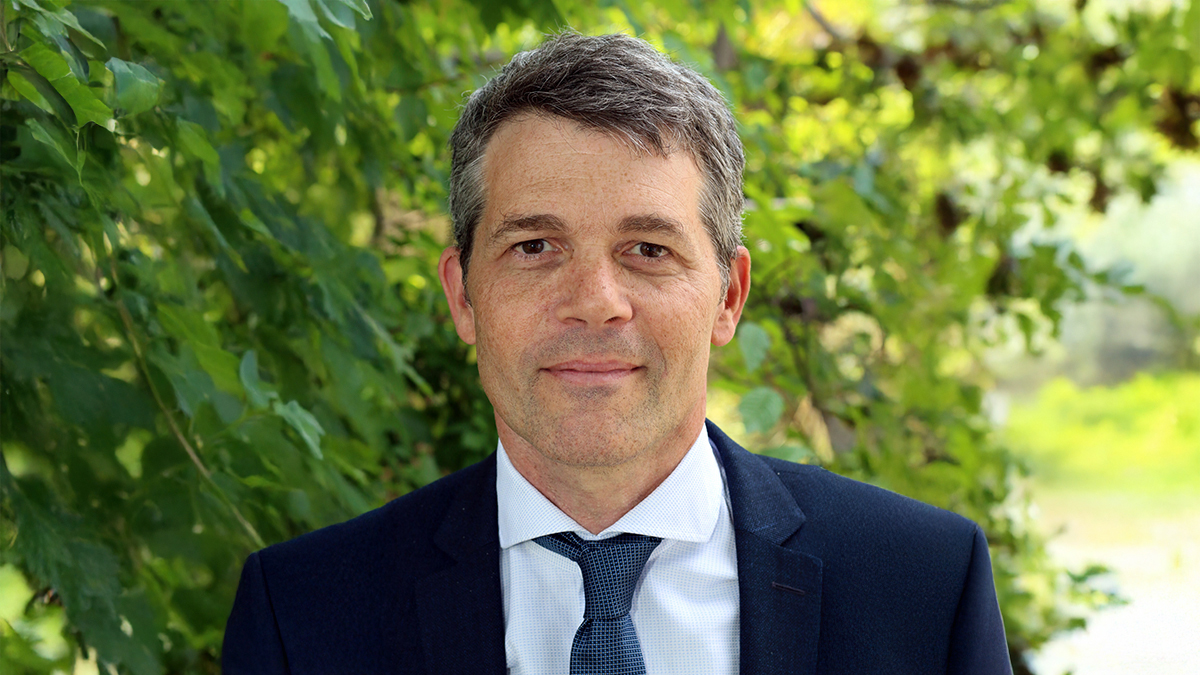Insurance should be the keystone of climate finance strategies: Aon
‘We touch on climate finance in almost every conversation with clients,’ Aon’s Liz Henderson says
Broker’s global head of Climate Risk Advisory outlines why the UN climate talks in Belém could prove to be ‘the insurance COP’
Re/insurers should place the climate finance lens over every line of business they underwrite, according to Aon’s global head of Climate Risk Advisory.
In an interview with Insurance Day, Liz Henderson says the theme of climate finance appears in almost every conversation with Aon clients, not just during events such as the UN climate talks or New York Climate Week.
“It’s about how we leverage the financial system and gear it towards solutions that are going to capture the opportunity that the climate transition creates. And what this really comes down to is the basics of insurance,” Henderson says.
The “basics” are understanding a risk to price it correctly by using the best quality data and models and the highest level of underwriting and engineering expertise. A significant layer building upon those fundamentals is the new technology needed to mitigate CO2 emissions or to monetise nature through carbon offsets.
Henderson says: “A totally new infrastructure is being built and it requires a widespread reskilling of the labour force, the investment community and the insurance industry to make sure we really understand the risks.”
A prominent theme for Aon in its conversations at COP29 in Baku last year was how to make decisions on funding the transition “happen in one room”, she continues. This is the only way to ensure the development of insurance products that unlock capital and enable new technology projects to get off the ground, she adds.
“No one should take for granted insurance will just be there,” she stresses. “If your project uses totally new building materials or new fuels then the underwriter can’t just look in their energy portfolio and say, ‘Oh, this is just another oil and gas plant’ or, ‘This infrastructure project is the same as the one they insured five years ago’. It’s new, so you can’t have conversations with insurers assuming the processes they followed on previous occasions will be the same.”
As recently as a few years ago, a project developer would sit with their potential investors and work through the risks of a project to secure the financing and insurance would be nothing more than a “tick the box”, Henderson says.
Early broker involvement
That traditional attitude to insurance is being replaced, she adds, by an awareness insurance brokers ought to be engaged from the outset of planning a project. An insurance broker can provide both project developers and financial institutions with the list of details insurers will ask for. “It’s why our clients are taking us with them to investor roadshows, to be able to educate both sides on the risk mitigation features the market is going to require,” Henderson says.
It is a truism that insurance makes a project bankable, but innovative technologies require insurers to be ever more creative, she continues. A notable example is technology performance guarantees to give investors confidence they can expect at least a baseline return on projects that are so new they have elevated risk.
Henderson says: “While we might innovate around parametric solutions for solar, for example, does that answer the full spectrum of issues the investors are seeing to make that project bankable? I always like to say, ‘It’s the spreadsheet, right?’”
“One thing we’re working on – and this is being driven by a lot of our clients in the sustainable finance space – is how to apply the risk lens to a project as a set of guidelines”
Liz Henderson
Aon
There may be ways to copy and paste between the spreadsheets of a project developer, investor and insurer, but new technologies require a much more “tactical” approach, Henderson says, especially if projects are going to achieve the scale needed to be a credible climate solution. Collective stakeholder engagement and co-ordination is the only way to achieve the scale and speed needed, she says, and this approach should be the “rhythm of an underwriter’s day-to-day work”.
Nevertheless, a tactical approach to a newer project does not prevent an insurer from providing its clients with an insurability “template”. “One thing we’re working on – and this is being driven by a lot of our clients in the sustainable finance space – is how to apply the risk lens to a project as a set of guidelines,” Henderson says.
A new offshore wind business will come with hundreds of pages of technical documentation, but what a project needs is a definitive list of questions an insurer will ask. Beyond that, Henderson says, direction will be needed on what to do if any of those answers means a different type of coverage than what was originally expected.
Proper preparation
It is this preparation that will make the difference in a project developer’s conversations with investors, Henderson stresses. It gives tools to the finance community that help them either to engage with the project or to tell the project developer the coverages and the limits they need to receive the funding. In addition, guidance will be needed on tax liability and tax credit so a project can be derisked as much as possible, she adds.
For example, an energy project in the US that is being financed partially by tax credits through the Inflation Reduction Act can be derisked by buying liability coverage. “That’s a perfect example of how you tie a product directly to the factor that’s driving a lot of the risk from the return-on-investment perspective,” Henderson says.
The Inflation Reduction Act is “such an important piece of legislation” in the US and the benefits of its tax credits are already apparent, she adds. The Trump administration may be attempting to pause some of the funding and alter the act, but the business opportunity of the transition to net zero will continue to exist, she stresses.
“We’re really focused on helping our clients recognise that opportunity and making sure we articulate it in financial terms, so it isn’t just about doing good for the sake of doing good,” she says. “Instead, it’s about a massive economic boom. If we can quantify it, if we can articulate it, then we’ll be able to achieve it.”
 Hail can make solar projects in Texas unprofitable from an insurance point of view
ZUMA Press Inc/Alamy Stock Photo
Hail can make solar projects in Texas unprofitable from an insurance point of view
ZUMA Press Inc/Alamy Stock Photo
Another example is US solar projects, which can be an unprofitable line of business from an insurance perspective because of hail losses, particularly in Texas, that drive up the cost of insurance.
Henderson says: “The solar developer thinks it has to increase its prices to make its project profitable and the investors look at that increase in price and argue the hail created downtime and they didn’t achieve the return they expected because the developer didn’t buy sufficient insurance. The investors then demand the developer buys a higher level of insurance for their projects. The result is the developer faces an increase in price from its insurers and also an increase in demands from its investors.”
Such a situation can be prevented, she says, by improving the developer’s and investors’ view of risk from a solar project’s exposure to hail. “Do they have the models they need to properly quantify that and are they embedding that engineering expertise for a technology that is evolving? By engaging with insurers and brokers that have access to such models and expertise, developers can educate their investors on the actual risk. And not only that, but they can also relate the amount of insurance that’s appropriate for their risk.”
Managing clients’ transition risk
Although there is a “patchwork of approaches” companies are taking to manage their transition plans, most of Aon’s insurance clients see that, to manage their own transition risk, they need to help their clients manage theirs.
“One of our values at Aon is we’re not going to walk away from a country or a company that is trying to transition,” Henderson says. “We want to find solutions that help them derisk their transition plans because we believe that will have a much bigger impact than withholding capacity entirely,” she adds.
For example, Indonesia may have a significant dependence on coal for its energy security, but it does want to transition away from fossil fuels. “We are helping it achieve a just transition by making sure it isn’t left without the financing it needs to do so,” Henderson says.
At the other extreme, even highly profitable Western companies are fearful of making bold transition plans public, in case they are held accountable for falling short of them. “There are some companies that are ahead of the game, that have been provocative, and that’s great, but there’s plenty of organisations that are worried about the backlash if they are too optimistic and then they miss their transition targets,” Henderson says.
That fear came up in Aon’s discussions at COP29, but Henderson is confident 2025 will be about “solidifying” confidence in the transition. “There are products that already exist, in directors’ and officers’ and in general liability, which we can apply through a ‘derisking the transition’ lens. In that way, and in conjunction with data and analytics, we’ll be able to provide companies with the clarity and confidence to be bold,” she says.
A risk to that boldness, however, comes from merger and acquisition (M&A) activity. “Companies that are entering an M&A agreement may suddenly have a new footprint and a new transition plan,” Henderson says. “We don’t want to discourage M&A activity and so we look to create products that, at least financially, give a company some recovery from such a situation.”
Chief sustainability officers’ role
This comes back to having the insurer present at an early stage and the best person to accommodate this is a company’s chief sustainability officer. Henderson says: “Chief sustainability officers generally used to think about their recycling plan, their building footprints, their carbon offset strategy. They previously did not think about insurance as something that is part of those discussions, so we need to be present in those rooms and relate how insurance can have a tangible impact on their sustainability objectives.”
The significance of COP30 in Belém is the publication this year of updated Nationally Determined Contributions.
“The energy transition needs to be part of an underwriter’s daily work. It isn’t a niche area anymore; it’s actually the new normal”
Liz Henderson
Aon
Henderson says: “It’s the first time we’ll see countries’ very specific, detailed plans on how they’re going to achieve their net-zero ambitions. Some countries will be prepared and some countries won’t, but a detailed plan is valuable because it gives investors and insurers an understanding of how and to what timelines countries are going to decommission coal and move away from oil and gas.
“That information is critical to the investors that want to make decisions on where they should deploy their capital, in what parts of the world they should allocate capital dedicated to green technologies. Those plans are super important and they’ll take some of the regulatory uncertainty out of the equation and create a more orderly transition.”
Aon co-authored a report with Deloitte last year on how the insurance industry is being perceived in the transition. Henderson cites a quote from this report by a risk manager who said his insurance companies never asked him about his transition plan. “The C-suite talks about it, but when it comes down to the day-to-day relationships an underwriter has with their clients, it isn’t part of the conversation. It can’t just be another thing an underwriter has to do; it must become relevant to the risk conversation because the climate mindset has to be in every layer of an organisation,” she says.
Prioritising insurance
There are many inventors of new technologies whose projects need to be derisked but who try to tackle the engineering and financing first and leave insurance to last. This needs to change, Henderson stresses, urging her peers to find ways to bring this new type of buyer “under our umbrella”.
She continues: “At COP29, I was talking to the owner of a company that specialises in floating wind plants. He understands the engineering, the technology, the energy system and the grid infrastructure needed to make floating wind work. He knows there’s a return to be made there, although it’s very risky. And yet he didn’t understand the type of insurance product he would need. As a broker, I was able to arrange all the conversations he needed to be having.”
Climate finance might seem to be a complicated process but actually the most important first step is simple, Henderson says. That is for re/insurers and their brokers to attend COPs and New York Climate Week.
“We need to ensure there is an underwriting lens across every organisation, and not only over their energy transition unit,” she says. “We’re seeing green solutions coming through our traditional oil and gas clients, standalone climate tech companies, construction and infrastructure companies, finance institutions. These projects are across the board and show the energy transition needs to be part of an underwriter’s daily work. It isn’t a niche area anymore; it’s actually the new normal.”
Underused solutions
At COP30, Aon plans to highlight how, as a broker, it can “scale-up underused insurance solutions and bring capital in”, particularly in relation to nature and food security.
“If you focus capital into those areas, it helps to address not just supporting the voluntary carbon market – which we still believe is a critical part of the net-zero ambition – but also how to direct money into the developing world and, in particular, small holding farmers and family-owned farms that have not received much benefit from global insurance in the past,” Henderson says, adding Aon will announce details of the scheme this summer.
The UN’s climate talks will evolve, she adds, as insurance clients demand more integration and collaboration. “All climate initiatives globally tend to be siloed into finance, nature, insurance and energy. Finance tends to go across a lot of different industries, and I think insurance needs to follow alongside finance.”
She continues: “Any organisation with nature solutions or energy solutions has a finance expert focused on each of those and you need an insurance person as well, but I haven’t seen this cross-sector collaboration yet. Aon and other organisations have been advocating for this, and I do think we will see Belém being the insurance COP, whereas Baku was the finance COP.”
Brazil is the perfect location for this evolution, given its nature-based, carbon credit and energy transition initiatives. “It’s a part of the world where you see all the solutions on the ground come to fruition, so I think insurers have an incentive to be there,” Henderson says.
She concludes: “And we at Aon will be there in a big way, to show this is the insurance COP.”



